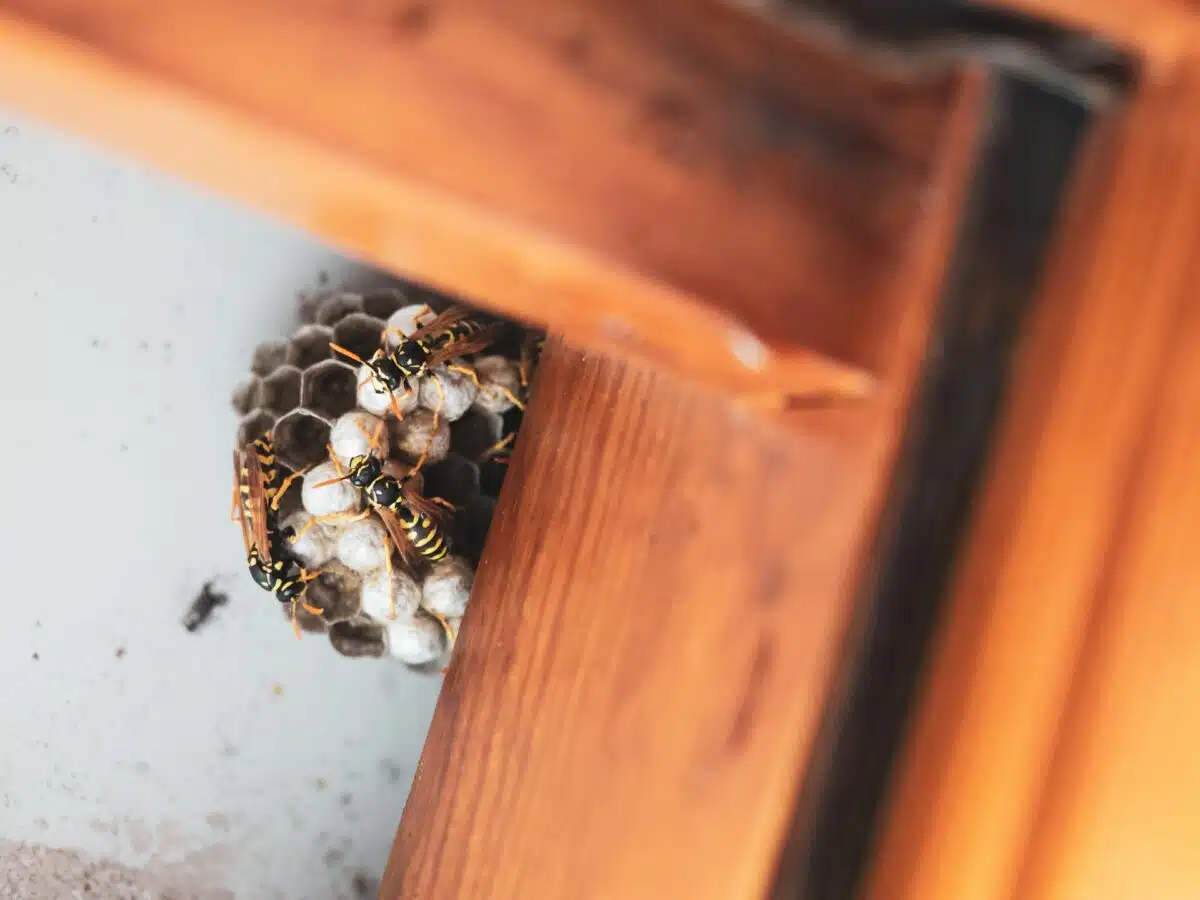Welcome to the all-encompassing beginner’s guide! We’ll cover everything about hornet’s nests.
If you find yourself fascinated by hornets and their intricately created nests then look no further! You’ll learn how these aggressive insects build and defend their homes and get a thorough overview of the diverse species involved in nesting activities.
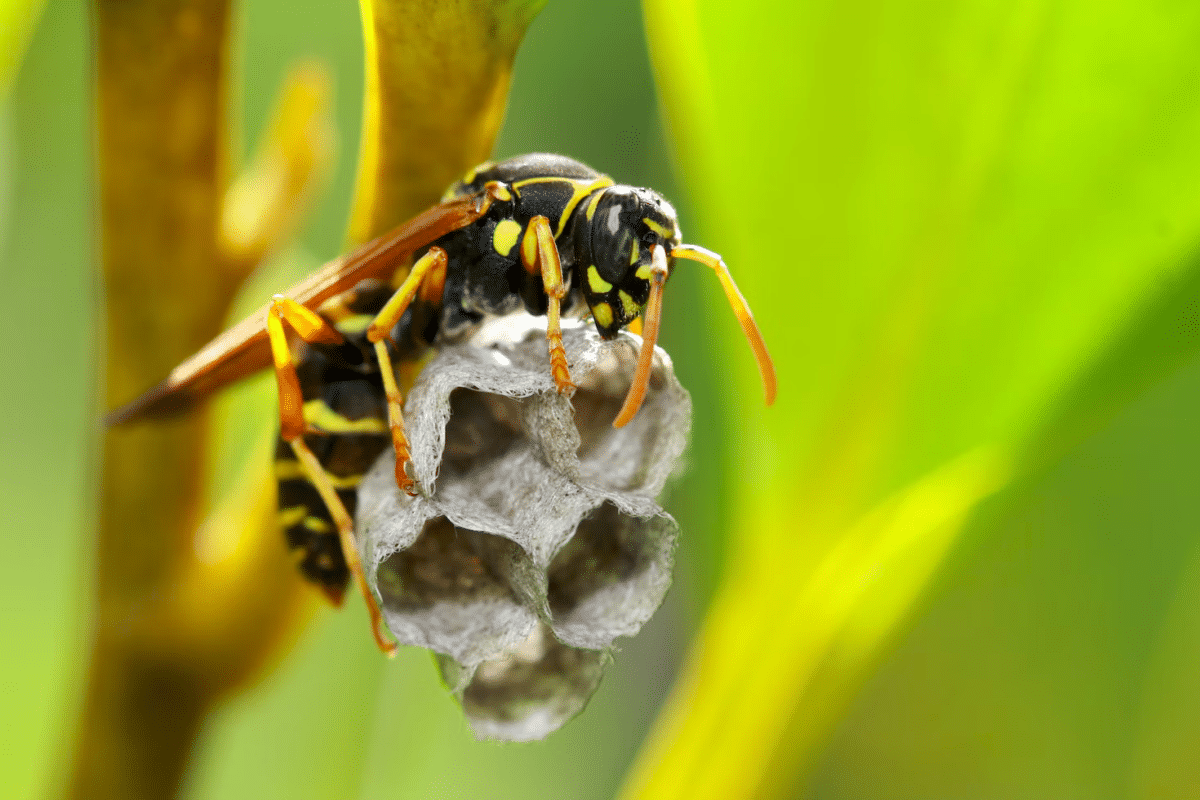
Furthermore, from paper wasps to European hornets, each species has a unique approach to creating a safe structure for its families – something that will intrigue any animal enthusiast or naturalist!
Read on to discover more insight into the mysterious world of hornet nests.
Want to jump ahead? Click below
Additionally, are you interested in Wasp Nests as well?
Getting To Know Hornets
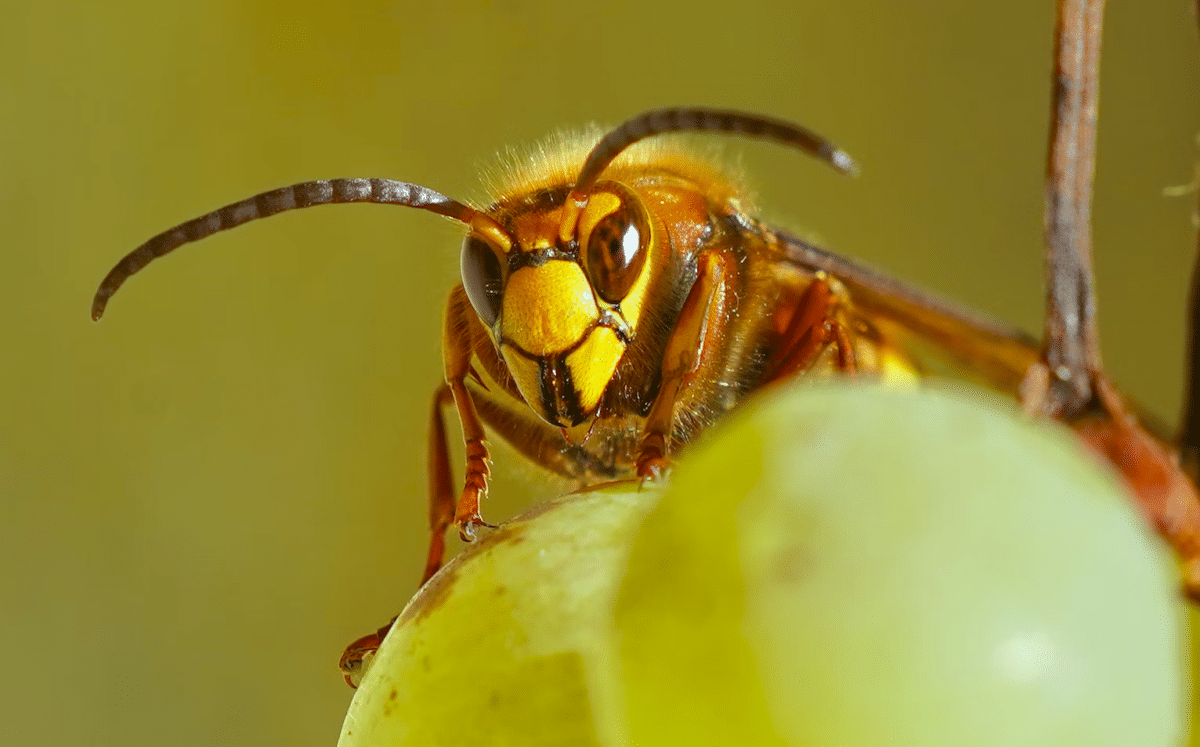
Hornets are a type of stinging insect that belong to the wasp family. Larger than most wasps, they have a distinctive brown and yellow striped pattern on their bodies.
They build large, round nests made of paper-like material and are known for their aggressive behavior and powerful stings. They feed on other insects, nectar, and sap and play an essential role in controlling pest populations. However, hornets can also become a problem for humans if their nests are disturbed, so it’s important to exercise caution around them.
Hornets Nests Are Intricately Created
Hornets are impressive social insects that thrive in large, organized communities, better known as colonies.
At the heart of each colony lies a mighty queen hornet, responsible for laying the eggs that ensure the colony’s growth and expansion. The nest, made from paper-like material created by the worker hornets, is more than just a cozy abode for the colony.
It serves as a safe haven, providing shelter and protection for the precious young and the entire colony as a whole. However, don’t be fooled by their seemingly peaceful existence, as hornets can be fiercely aggressive and protective of their homes.
They won’t hesitate to defend their nest if they sense any threats. Therefore, it’s crucial to exercise caution and avoid disturbing a hornet’s nest. If you happen to come across one, it’s best to leave it alone and seek professional assistance for removal.
Species Of Hornets
There are many different species of hornets found all over the world. Some of the most well-known species include:
- The European hornet,
- The Yellow Jacket
- The Bald-Faced Hornet
Each species of hornet has its unique characteristics, such as size, color, and behaviour. For example,
- the European hornet is a large, reddish-brown insect typically found in wooded areas.
- The yellow jacket is smaller, yellow, black, and often seen in urban areas.
Despite their differences, all hornets are known for their powerful stings and aggressive behavior when their nests are disturbed.
For more information on hornets and their different species, you can visit Rentokil.
What Does A Hornet’s Nest Look Like
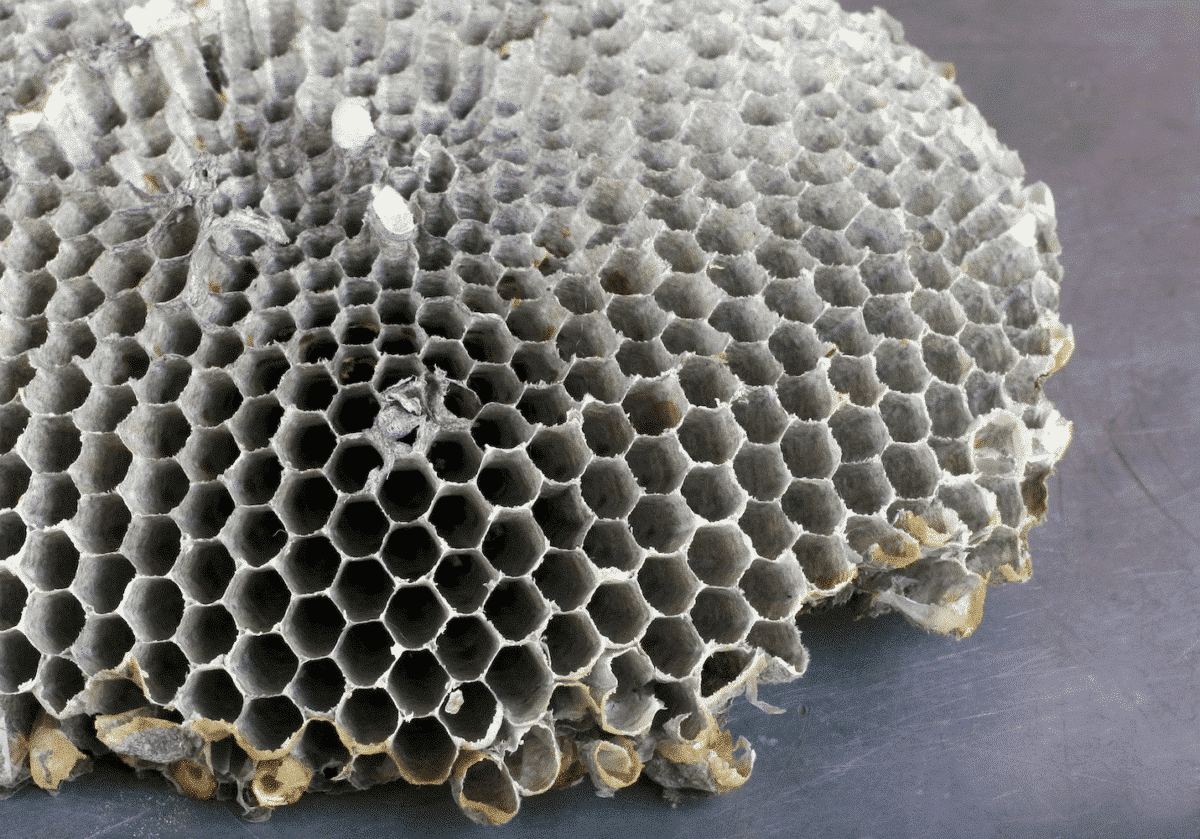
If you’re curious about what a hornet’s nest looks like, get ready for some fascinating details! These remarkable structures are made of a unique, papery material and can take on a variety of shapes and sizes.
Comparatively, a hornet’s nest can resemble a round ball, similar to a small pumpkin, or be more cylindrical if nestled in a tree. The size of the nest can vary tremendously, ranging from as small as a golf ball for a few hundred hornets to as large as a basketball for a massive colony of thousands.
The shape of the nest often depends on its location, with tree-dwelling nests being more cylindrical and those located in buildings or other structures being flatter. Evidently, you can find these nests in various places, from trees to buildings, with a typical color of gray or brown.
The exterior of the nest is often bumpy and rough to the touch, providing an extra layer of protection for the smooth and delicate interior, which is guarded by multiple layers. So, next time you come across a hornet’s nest, you’ll know just what to look for!
Learn more about Hornets nest appearance.
The Dangers of Hornets Nests
Beware of hornets’ nests! Especially, as these structures can be quite dangerous for several reasons. As we’ve mentioned, hornets are extremely protective of their nests, and any perceived threat can lead to a swarm of angry hornets attacking and stinging with painful results, including swelling and redness.
Additionally, the location of the nest can also pose a danger, as a nest in a tree could fall and cause damage to property or even harm people or pets. Likewise, a nest on a building or other structure can cause significant structural damage if it isn’t removed correctly. It’s essential to exercise caution and avoid disturbing a hornet’s nest, as the consequences can be severe.
If you come across a nest, it’s best to leave it alone and seek professional assistance for safe removal. Moreover, remember to take the necessary precautions, and being aware of the dangers associated with hornets’ nests can help keep you safe and avoid potential harm.
How To Avoid Hornets Nest
Here are a few tips to avoid hornets nests:
- Be aware of your surroundings:
Keep an eye out for nests when you’re outside and avoid areas where you see hornets flying.
- Avoid wearing bright colors and floral prints:
Hornets attract bright colors and floral patterns, so it’s best to avoid wearing these when you’re near a hornet’s nest.
- Don’t wear perfumes or scented lotions:
Strong scents can attract hornets, so it’s best to avoid wearing them near a hornet’s nest.
- Keep food covered:
Hornets are attracted to food, so protect your food and drinks when eating outdoors.
- Be cautious when disturbing objects:
If you need to move an object near a hornet’s nest, do it slowly and cautiously to avoid disturbing the hornet.
- Professional Help:
When it comes to hornet’s nests, it’s always better to err on the side of caution. If you happen upon a hornet’s nest, the safest course of action is to leave it be and contact a professional to handle its removal.
Straightaway, ensures that the nest is removed safely and effectively without harming yourself or others. Don’t take unnecessary risks with hornet’s nests – trust the experts to handle it properly.
Following these tips can help avoid Hornet’s nest and reduce the risk of being stung.
How Are Hornet Nests Constructed?
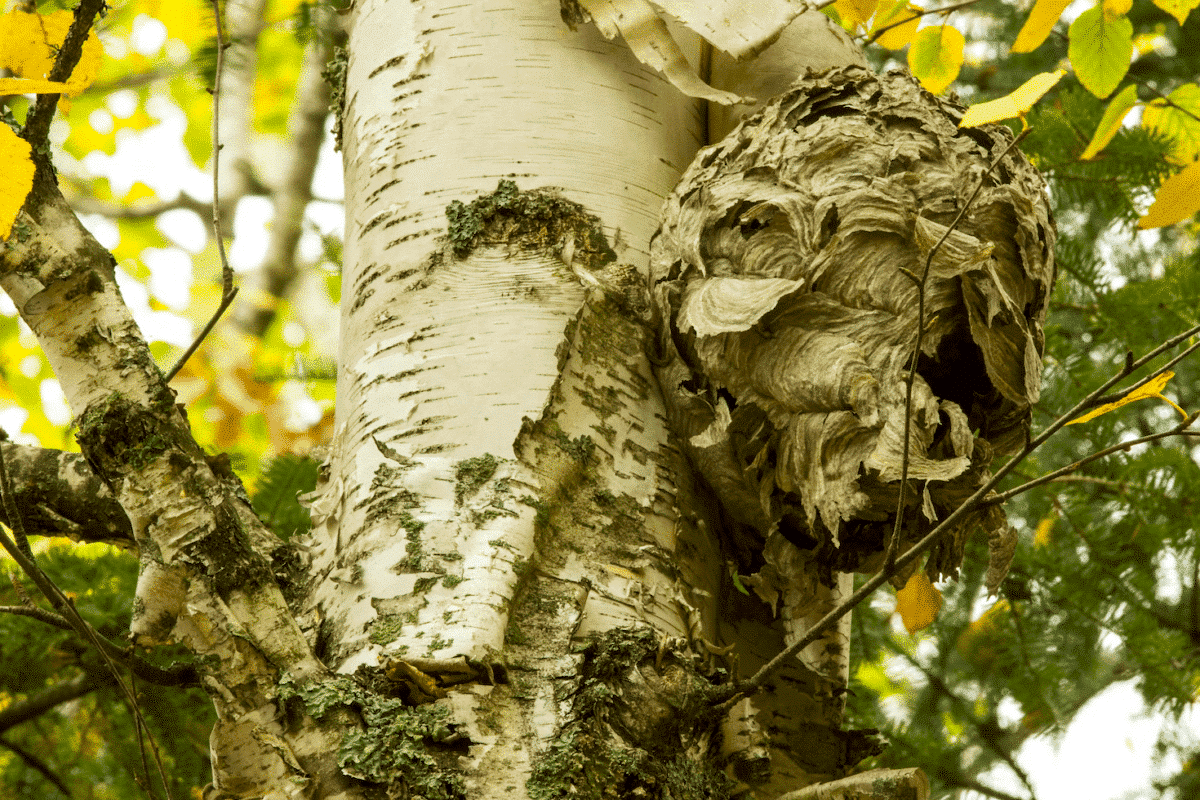
The construction process of a hornet’s nest involves several steps, which are:
- Selection of location:
The queen hornet sets out to find a suitable location for the nest. She selects a place that provides protection from the elements and is close to a food source, such as flowers or other insects.
- Building the platform:
Once the selected location is, the queen begins to build the nest. She uses her saliva to mix with wood fibers to form a paper-like material. The nest starts as a small platform, which the queen will expand as the colony grows.
- Expansion of the nest:
As the colony grows, the queen will add more cells to the platform to accommodate the growing number of hornets. She will continue to add cells until the nest reaches its final size, which can be small as a golf ball or large as a basketball.
- Formation of a spherical structure:
The nest will eventually become a large, spherical structure that can contain hundreds of hornets. The system provides protection and shelter for the colony and has made of sturdy paper-like material.
- Maintenance of the nest:
The queen and the other hornets will maintain and repair the nest as needed to keep it in good condition. They will also add new cells to accommodate the growth of the colony.
Simultaneously, the construction process of a hornet’s nest is complex and orderly, taking time and effort. It involves the cooperation of the queen and the other hornets in the colony, resulting in a sturdy and protective home for the colony to thrive.
Why Are Hornet Nests Dangerous?
Hornets’ nests pose a significant danger to people and their surroundings for several reasons:
- Proximity To Human Activity:
Such as, hornets’ nests can be located near human activity or someone’s home. Therefore, putting people in close contact with the hornets and increases the likelihood of a sting.
- Agitation Of Hornets:
If someone tries to disturb the nest, the hornets will become agitated and may attack. It can result in multiple stings and a dangerous situation.
- Painful Stings:
Want to compare to another another sting? Hornets can cause painful stings that can be dangerous to people allergic to their venom. The venom of a hornet contains chemicals that can cause swelling, redness and intense pain at the site of the sting. In severe cases, an allergic reaction to the venom can be life-threatening.
- Damage To Structures:
If they are located in or near a building, the nests can damage structures. The paper-like material used to construct the nest can be abrasive and can cause damage to siding, roofing, and other parts of a building. In addition, the weight of the nest can also be a concern if it is located on a building or different structure.
Given the dangers posed by hornets’ nests, it is essential to avoid them and seek professional help if a nest is located in a difficult-to-reach area or near a home or building.
How to Remove a Hornet Nest Safely
Removing a hornet’s nest can be dangerous, so it is important to take precautions. If you are allergic to hornet stings, it is best to seek professional help to remove the nest. If you are not allergic, you can remove the nest yourself using the following steps:
- Protect yourself by wearing long sleeves, pants, and gloves.
- Choose the right time to remove the nest. The best time is at night when the hornets are less active.
- Locate the nest and determine the best way to remove it. If the nest is in a tree, you may need to use a ladder to reach it.
- Use a spray bottle filled with soapy liquid to soak the nest. The soap will help to kill the hornets and make it easier to remove the nest.
- Once the nest is soaked, use a broom or stick to knock it down carefully. Place the nest in a plastic bag and dispose of it properly.
- Clean the area where the nest is located to remove any residue and prevent new hornets from building another nest in the same spot.
Hornets’ nests can be a problem if located near human activity or someone’s home. It is important to understand what hornets’ nests are, how they are constructed, and how to remove them safely. If you are allergic to hornet stings or feel uncomfortable removing the nest, it is best to seek professional help.
By following these steps, you can remove the hornet nest safely and prevent it from becoming a dangerous problem.
Hornet Prevention Tips For Your Home or Yard

Here are some tips to help prevent hornets from building nests in or near your home or yard:
- Keep food and garbage covered:
Hornets are attracted to food and garbage, so it is important to keep these items covered and stored in sealed containers.
- Keep sugary drinks covered:
Hornets are also attracted to sugary drinks, so it is important to keep them covered when you are outside.
- Trim back vegetation:
Trimming back trees, shrubs, and other vegetation can help reduce the number of cover hornets has to build their nests.
- Seal cracks and holes:
Sealing cracks and holes in your home, garage, and other structures can help prevent hornets from entering and building nests inside.
- Use yellow lights:
Hornets are attracted to white lights, so using yellow instead can help keep them away from your home.
- Wear protective clothing:
If you are working outside and are worried about hornets, wearing protective clothing, such as long sleeves and pants, can help reduce the risk of a sting.
- Avoid wearing bright colors and floral prints:
Hornets are attracted to bright colors and floral patterns, so it is best to avoid these when you are outside.
- Keep windows and doors closed:
Keeping windows and doors closed can help prevent hornets from entering your home and building nests inside.
Following these tips can help reduce the risk of hornets building nests in or near your home or yard and help keep yourself and your family safe.
What To Do If You Have An Encounter A To Hornet Nest?
If you encounter a hornet’s nest, it is important to stay calm and avoid making sudden movements that could provoke the hornet. Do not attempt to swat at the hornets or disturb the nest in any way. Slowly and carefully back away from the area and try to avoid walking or standing near the nest in the future.
If the nest is in a location that poses a danger to you or others, such as near an entrance to your home or in a high-traffic area, it is best to contact a professional for safe removal. Do not attempt to remove the nest on your own, as this can be dangerous and provoke the hornets to attack.
It is important to always exercise caution and respect when dealing with hornets and their nests. You can safely and effectively manage any hornet’s nest encounters with the proper precautions and professional assistance.
Hornets Nest and Ecosystem
A hornet’s nest is a structure made by hornets, a type of stinging insect. Hornets build their nests using a mixture of saliva and wood fibers, and they use them to protect and house their young.
An ecosystem is a community of living and nonliving things that interact. This can include animals, plants, soil, water, and air. The hornet’s nest is a part of this ecosystem and impacts it. For example, hornets feed on other insects, which helps to control the population of those insects.
At the same time, other animals, such as birds, might prey on hornets, keeping their population in check. This balance of living things helps to maintain the stability of the ecosystem.
If you want to learn more about hornets and their nests, you can check out websites like pestworld.org, which has detailed information about different types of hornets and their habitats.
Additionally, the National Geographic website also has an article about hornet nests and how they are built, which can provide further insight into the fascinating world of these stinging insects.
Wrapping up on Hornet Nests
Hornets are amazing creatures that display fantastic feats of engineering with their nests. Although they can be a nuisance, it is essential to appreciate these insects’ role in the ecosystem.
If you find a hornet nest on your property, the best option is to contact a professional for removal. Otherwise, please sit back and enjoy observing these incredible animals as they live!
Also, have a look at Do Ladybugs bite?
- Bald Eagle Family Expand Their Nest In California - April 24, 2024
- Firefighter Saves Abandoned Kittens Found Cuddling In Hoses - April 24, 2024
- Dolphins Get High Playing Catch With A Pufferfish - April 24, 2024

